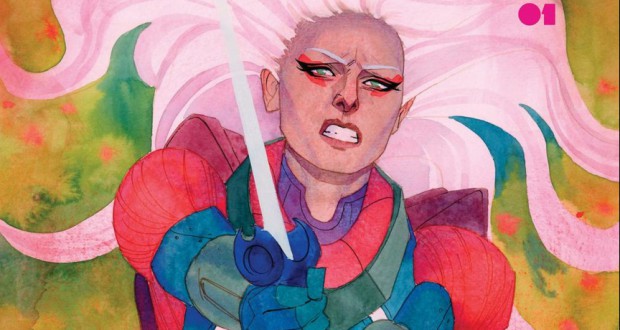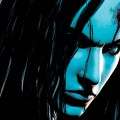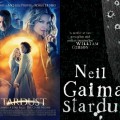Greek gods, space opera, psychedelic art and gender inversion – at first glance, Matt Fraction and Christian Ward’s ODY-C has it all. Unfortunately, the text is so abstract as to be at best confusing, at worst incomprehensible.
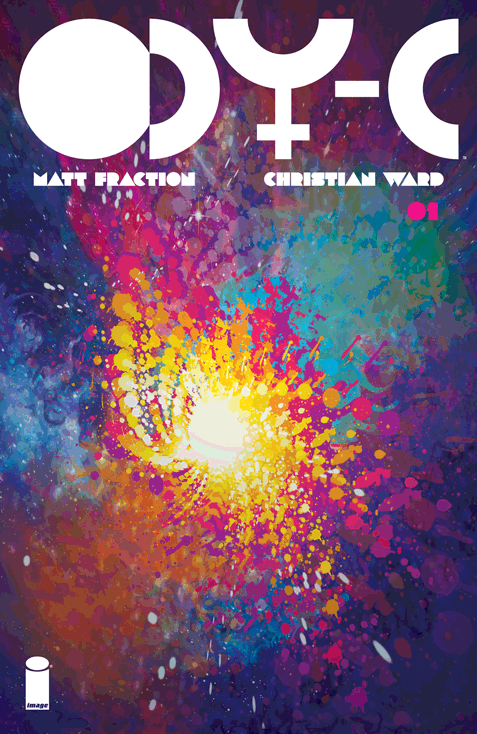 Matt Fraction has been popping up everywhere in recent years. And this is a good thing for the most part. Sex Criminals is great fun and his run on Hawkeye is almost universally acclaimed. So when I spotted ODY-C, with its mind-bending artwork, it immediately made its way to the top of my to-read pile. Being a total nerd when it comes to the Ancient Greeks helped as well, with the comic being a futuristic re-telling of Homer’s classic, The Odyssey. Only Fraction doesn’t simply transport the story into the distant future, he also inverts the gender of the main characters, throwing them into a world where men no longer exist.
Matt Fraction has been popping up everywhere in recent years. And this is a good thing for the most part. Sex Criminals is great fun and his run on Hawkeye is almost universally acclaimed. So when I spotted ODY-C, with its mind-bending artwork, it immediately made its way to the top of my to-read pile. Being a total nerd when it comes to the Ancient Greeks helped as well, with the comic being a futuristic re-telling of Homer’s classic, The Odyssey. Only Fraction doesn’t simply transport the story into the distant future, he also inverts the gender of the main characters, throwing them into a world where men no longer exist.
The premise of this is practically literary porn to someone like me. I was drooling before I’d turned the first page. As such, the esoteric nonsense that flowed forth over the course of the first trade paperback left me more than a little miffed. There are, of course, elements of the original piece of work that are hard to grasp and the telling of it somewhat stilted when compared to modern prose writing, but it is a product of its time. Was Fraction attempting to keep that feeling? If so, he sort of succeeded, but it still doesn’t work. It is difficult to follow, the characters are broad sketches at best, and the narrative leaves the reader completely cold.
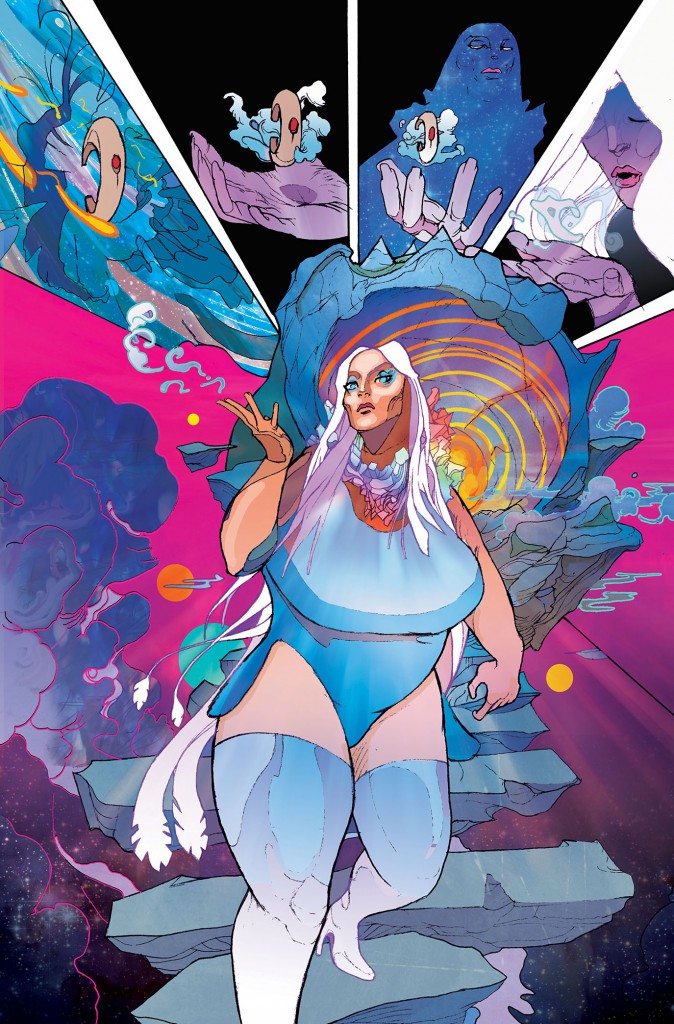 I’m all for recasting genders in retellings but I like to have a good justification for it. Why is it important to the story that you are telling to have the characters re-cast? It doesn’t seem to be very important to the story at all. In fact, it makes bugger all difference. The story could be switched back to all male and I wouldn’t find the messaging any different. Perhaps that is harsh; there is the obvious point of turning a male dominated society into one where no men at all exist, a kind of Amazonian tale. But really, it’s been done before, and nothing about this narrative particularly lends itself to that kind of storytelling, nor does it really add anything over and above the original – already entirely epic – story.
I’m all for recasting genders in retellings but I like to have a good justification for it. Why is it important to the story that you are telling to have the characters re-cast? It doesn’t seem to be very important to the story at all. In fact, it makes bugger all difference. The story could be switched back to all male and I wouldn’t find the messaging any different. Perhaps that is harsh; there is the obvious point of turning a male dominated society into one where no men at all exist, a kind of Amazonian tale. But really, it’s been done before, and nothing about this narrative particularly lends itself to that kind of storytelling, nor does it really add anything over and above the original – already entirely epic – story.
The source material is so full of action sequences that there is plenty of content to cover, but that still doesn’t explain why Fraction feels the need to rush through so much of it. Blink and you’ll miss key sequences. And despite this speedster approach to blurring through epic storylines, it can at times feel like it drags on because of the lack of dialogue and its replacement with omniscient narration. The 3rd person pieces are often irritatingly tedious with arcane language that elucidates frustratingly little.
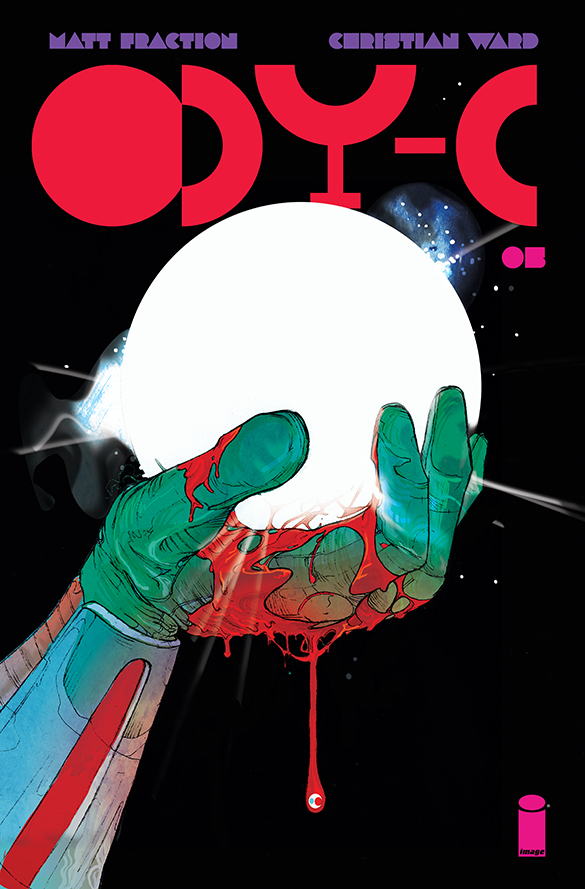 What redeems the collection is Christian Ward’s acid tripping art. It is so out there and different from any other graphic novel I’ve read that it almost makes ODY-C worth reading. At times, I wondered if it wouldn’t have worked better as entirely a visual story, leaving Ward to work out how to tell the story without any text at all. That would really have been an out of the box graphic novel I’d like to see attempted – after all, adapting a classic would be the easiest way to tackle such a thing.
What redeems the collection is Christian Ward’s acid tripping art. It is so out there and different from any other graphic novel I’ve read that it almost makes ODY-C worth reading. At times, I wondered if it wouldn’t have worked better as entirely a visual story, leaving Ward to work out how to tell the story without any text at all. That would really have been an out of the box graphic novel I’d like to see attempted – after all, adapting a classic would be the easiest way to tackle such a thing.
I understand that Fraction is attempting to try different styles, genres, and so on. And the motivation behind it is admirable and interesting, but ODY-C doesn’t succeed. You can’t hit gold every time. I suggest you stick to Fraction’s other – far superior – work.
Verdict: Completely opaque and full of frustratingly obtuse prose. The art is stunning, and worth a glance but not enough to warrant reading the entire collection.
 Pop Verse Pop Culture Universe
Pop Verse Pop Culture Universe
